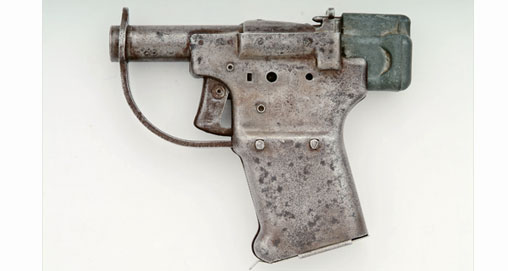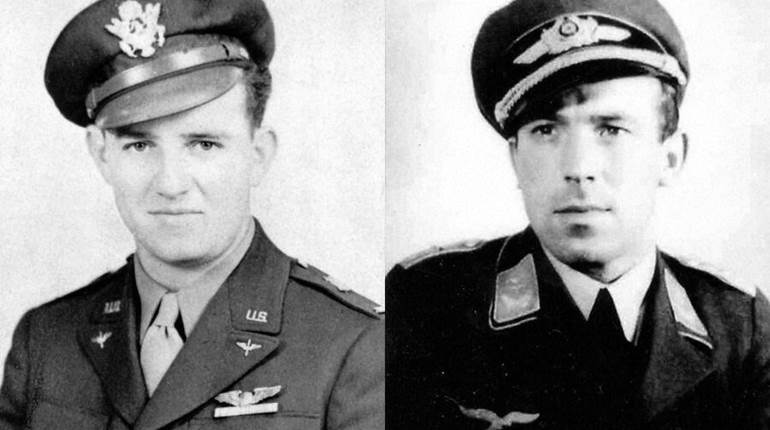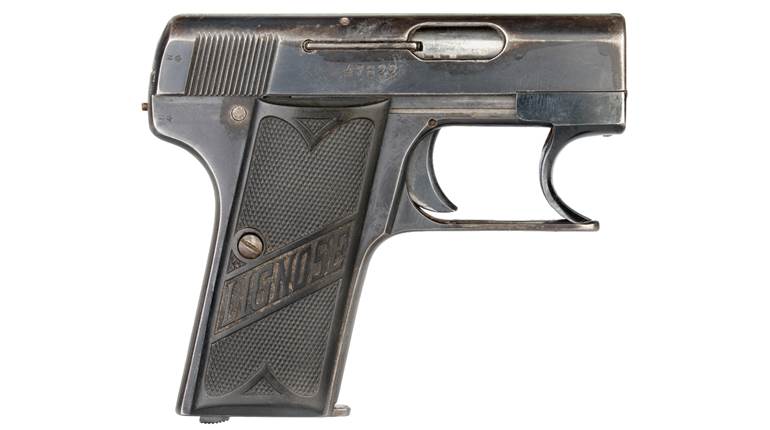
World War II “Liberator” Pistol
Gun: “Liberator,” .45 ACP, single-shot pistol
Condition: NRA Modern Fair (20 to 60 percent)
Approximate Value: $2,250 to $2,750
Perhaps no other handgun in U.S. history has been burdened with as many misconceptions about its post-production history as the “Liberator.” Conceived by the U.S. Joint Psychological Warfare Committee in early 1942 without any input from the armed services, production of 1 million Liberators was approved by Gen. Eisenhower and others. This new .45 ACP single-shot pistol would be code-named the “flare projector” (Model FP-45) or “flare signal pistol” to protect its real identity.
After representatives of U.S. Army Ordnance met with both the Inland and Guide Lamp Divisions of General Motors in Washington, D.C., on May 12, 1942, it was decided that Guide Lamp would be the better choice, since Inland was already deeply engaged in U.S. M1 Carbine production.
The FP-45 Liberator was designed to be made quickly and simply, with a useful range of less than 50 ft. It took longer to load one than to make it. All 23 unserialized parts were stamped from corrosion-resistant metal with the exception of the cocking knob, 4" non-rifled barrel and several other small parts. The complete pistol kit included a waxed cardboard box, 10 cartridges (headstamped FA-42 for Frankford Arsenal, 1942), an instruction diagram (no words) and a wooden shell-extractor dowel. It was completed at a cost of $2.10 each, while the Liberator itself was produced for only $1.73 per unit.
Although Liberator production went well, the distribution process was a disaster. Very few of these ever made it into Europe and certainly were never air-dropped in quantity or at all. Gen. MacArthur committed to 50,000 pistols, most of which were shipped to Australia in 1943 for redistribution to occupied islands. This left approximately 450,000 handguns remaining, which the Army no longer wanted, and they ended up in the custody of the newly formed OSS (Office of Strategic Services), which nicknamed this pistol the Liberator or “Woolworth” gun.
It is thought that more than a half-million Liberators were either melted or dumped into various oceans or seas after the war. Very few G.I.s or Allies in any World War II theater ever saw a Liberator, and if they did, many thought it was a cheap Japanese “suicide special,” since it was unmarked and not part of standard U.S. ordnance. As a result, remaining specimens are very hard to come by, and condition doesn’t seem to be much of a factor in pricing, as long as it’s original. Not that long ago, Liberators were selling for $750 to $1,000, but now prices typically start at $1,750 and can top $4,000 for a nice original pistol kit.
-S.P. Fjestad, Author & Publisher, Blue Book of Gun Values
Originally published March 2007.





































